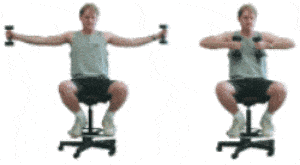
Figure skating is one of my favourite sports to watch. The gracefulness and glamour of the athletes are awe-inspiring and, if you’re half as uncoordinated as I am, you’ll wonder what kind of injuries you’d sustain if you tried to give the sport a crack! With the level of sophistication that accompanies such an elite sport, there’s sure to be some science involved! Personally, I find knowing more about the science behind something only enhances my appreciation of it.
So let’s jump right into it! Here’s a quick refresher of three (very broad) physical rules that come into play with figure skating: momentum (and angular momentum), friction, and Newton’s Third Law.
Momentum
Momentum is a measure of how hard it would be to stop an object from moving. Two factors (in a multiplicative relationship) affect the momentum of an object moving in a straight line; mass (kg) and speed (m/s). So if you wanted to double something’s momentum, you can either double its speed or its mass.
Angular momentum is a property of an object spinning about a fixed point. If you’ve ever sat quickly into an office chair you would have experienced angular momentum. Angular momentum is affected by not only by an object’s rotational velocity but also the objects weight and the distribution of that weight.

(source: google images)
The closer all of the mass is to the axis of rotation, the faster that object will spin, because of angular momentum. The gif below demonstrates this:

(source: giphy.com)
Friction
Friction is the force that occurs when two objects rub against one another. It is a resistive force, pushing against the direction of motion. For example, when you push your hands together and rub them against one another, the force from your muscles is being pushed against by the force of friction.
Friction in our everyday lives often manifests as the kinetic energy is transformed into heat energy and/or sound energy. The smoother a surface is, the less friction it causes when something rubs against it; recall a time when you were easily able to push a box across a tiled floor compared to on a rough carpet.
Newton’s Third Law
This is the Law of physics that most people have heard of in one form or another. It says that “for every action, there is an equal and opposite (in direction) reaction”. Any time you give someone a high-five, your hand is pushing against your partner’s hand, and their hand is pushing against yours!

Knowing that any time we push against something, it pushes against us, we can look at walking. Stand up right now and stand still. When you take a few steps forward, notice how the front of each of your feet seems to push back against the ground. From Newton’s Third Law we know that the ground is also pushing us equally hard, just in the opposite direction! The ground pushing us moves us forward, and so we can walk!
As a side note, there is actually more science than just Newton’s Third Law involved when it comes to walking. Pendulums, muscle contractions and even our sense of balance are just some of the phenomena we need to consider when humans stand up to walk!
Here’s a meme to give our brains a break:

Let’s now look at how a figure skater can do a spin and a jump, with all of this science in mind!
(source: theatlantic.com)
For a skater to be able to do a successful jump, they need to decide exactly how high they want to jump, and how fast they want to be going. If we refer to the gif above, a few actions become more noticeable:
- The skater moves her whole body towards the ice and then pushes down on the ice with her skates to jump as high as possible. As we learned from Newton’s Third Law, the ice is actually pushing her up as she pushes the ice down, giving her height in the jump
- At the moment she jumps, and as she lands, her skates turn 90 degrees (a right angle) relative to her direction of motion. This gives her more friction against the ice, and in turn, gives her more traction and control as she pushes herself up. Doing a jump this way decreases the likelihood of a slip and/or a fall.
- As soon as she becomes airborne, she has a certain amount of angular velocity (the speed of her spin), which she gave herself as she jumped at an angle. Recall that the closer an object’s mass is to its axis of rotation, the faster it will spin.
- As we can see, her axis of rotation is approximately where the black line is superimposed. When our skater moves her arms and legs closer to the axis of rotation, her angular velocity increases. Similarly, she slows down as she lands both due to friction and moving her arms and legs outwards.
We hope that you have enjoyed our series on the science of Olympic sports, and now it’s back to our regular programme!
Happy teaching,
Learn more about ‘Forces, Friction and Movement’ with the Fizzics team!

NEW Primary science teaching book!
“Be Amazing! How to teach science, the way primary kids love”





























Comments